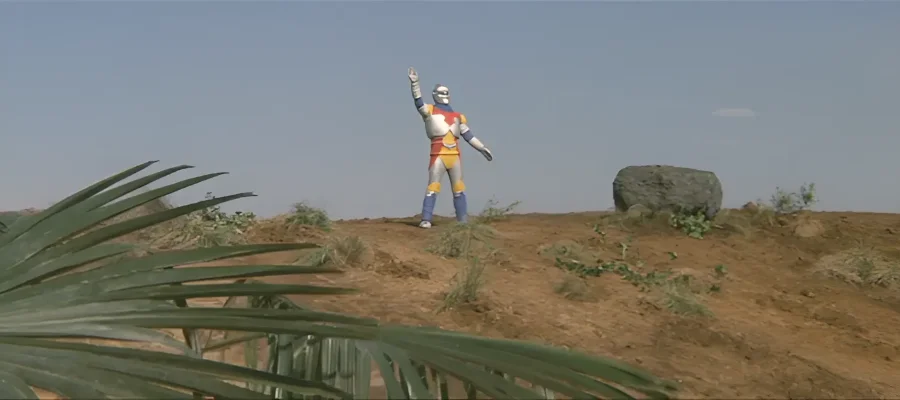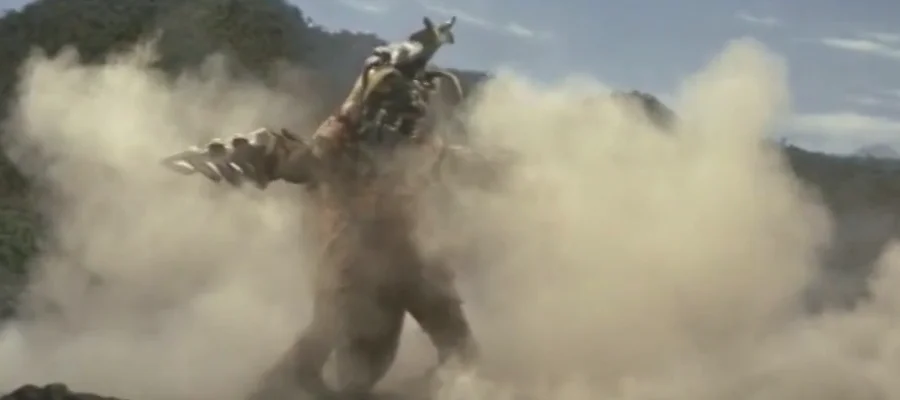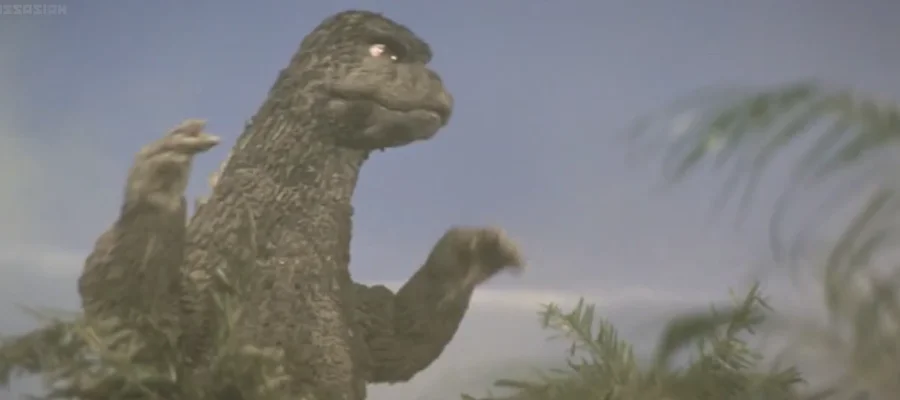Godzilla is a venerable franchise of modern cinema, that serves in its own way as part of the spine of all cinema of the 20th century. An intense, thoughtful, iconic movie with exciting special effects and a grim, painful perspective that seems informed by its relationship to a very real place and time in history about a cultural pain. I mean that’s what informs what I know about Godzilla, which is to say, I have studied the same 1954 movie everyone else has and read the same cultural critiques from non-Japanese authors.
Since then, Godzilla, as a character, is just an icon. Godzilla signifies Godzilla. Godzilla is used in so many different ways to signify so many different things that Godzilla is less of a character with its own distinct personality and values and more a sort of genre signifier of its own. ‘Godzilla shows up’ is a way an entire genre of media works now. Godzilla was special effects movie star in the 60s, a spectacle fighter in the 70s, a kid’s cartoon icon in the 80s, a gritty reboot in the 90s and a metatextual signifier throughout the 21st century. There is a wealth and a depth to every single one of the Godzilla movies that can be put into a greater and broader context of its appearances and what it means to be a Godzilla movie.
Anyway, nuts to all that, let’s talk about Godzilla vs Megalon.
Godzilla Vs Megalon is a 1973 film, made out of scrap parts over what you would probably consider ‘the rush season’ of a retail work period. Three weeks of filming, with upwards of months of pre-planning, script-writing, character designing and buying props from the local toy store. The whole movie was designed to be a star vehicle for Jet Jaguar, the robot in the movie, who was not named Jet Jaguar when the child that made it designed it. When they realised they didn’t have the star power they wanted in this little robot, they decided to, in a way that reused stock footage, bring in two completely unrelated ringers from a previous movie, Gigan and Godzilla, and then, they fight.
There’s a message in the movie about ancient Easter Island heads and pre-historic antediluvian civilisations called the Seatopians, represented in their feckless, debauched technological threat by white people in gogo boots, which, you know what, we should just accept that one.
It’s a bunch of stuff happening, there’s no consistent throughline, the major characters are, in the dubbed tracks, not named, the Godzilla rebuild looks goofy and the final fight is a bunch of dudes in Kaiju suits absolutely doing effects-assisted pro-wrestling moves on the parts of one another they know aren’t actually going to be harmed too badly in those same suits.
It is the goofiest Godzilla property I’d ever seen. There’s a famous gif of Godzilla getting up on its tail and charging with both its feet, which is a technique for propulsion I’m sure every kid with a Godzilla toy has imagined doing. It is 100% true and authentic to the play pattern and also obviously absolute nonsense. That’s from this movie! That’s this bit! But also this movie has a robot programming itself to increase in mass two hundred fold, it has a swathe of Stock Footage Toys being burned by a blowtorch and it has a dam that is very obviously a real prop that they just flung the actor through.
I think there’s a real invitation to try and make sense of what this movie is doing, like you can’t just look at this and accept that hey, this movie is a bunch of disjointed special effects and silly power moves, and instead there must be some deeper meaning to it, some sort of structural analysis that addresses its place in the Godzilla ouvre. There’s an implication that comes with that that being trashy, funny, and silly art means it isn’t art any more, that art comes with an inherent kind of quality limiter. Making a cheap, live-action version of a cartoon to fill seats needs some sort of deeper focal quality, some place in a greater story to really ‘be’ Godzilla, to ‘be’ art.
And I don’t think that’s necessarily true. This media doesn’t require or demand you turn off your brain and act like the silly things, the continuity errors, the utterly ridiculous lip-sync on the white actors, is not there. It’s not like ‘just turn off your brain and relax’ is how media works. What I want here is to instead accept that this is a silly, goofy thing that got made on a small budget. I don’t want to pretend that I know some great story about the creators, that I didn’t just extract from Wikipedia at the last minute. I don’t want to make it like somehow this thing being silly is actually genius, because it’s not.
This movie is an entirely forgettable piece of 1970s media present for completionists and fans of goofy things to check out and have fun with that also happens to feature one of the most important characters ever created in Japan as a reflection on Japanese culture. That’s interesting in its own right, especially because there was an impetus to make this movie successful. They put Godzilla in it. But they didn’t just put Godzilla in it, they also updated Godzilla’s suit, they reused old footage of Godzilla (possibly just to save money), and they made Godzilla do a bunch of cool things they thought people would like to see. That’s also why there’s a whole plot point, I bet, about going to a toy store (where they might have bought a bunch of those props). That’s why it has a brand new Kaiju monster (who looks really cool). It’s probably also why the main characters include a child who gets shown having a bunch of cool toys to muck around with.
I first saw Godzilla, the 1954 movie,in university, in a class, and we had to write about it. I wrote about how that as an Australian, we treat our country like it’s not directly next to Asia, and try to do our best to stamp out our relationships to those countries because we’re racist. Like, there was more to it, but that was the simplest summary of it.
I said, at the time, that Godzilla wasn’t about revenge, that Godzilla wasn’t on anyone’s side. Godzilla was something that happened to people, not someone who did things for people.
This, here, is the point in the great story of Godzilla, where not only is Godzilla on someone’s side, Godzilla is on the side of, essentially, little kids. Godzilla fights like how little kids would want it to, Godzilla is fighting the way little kids play with Godzilla toys, and Godzilla is even friendly looking, like a kid would imagine Godzilla to be.
I understand there’s an MST3K episode about this. I hope it’s great.
I haven’t seen it.
I don’t know how I’d need that to laugh at this preposterous movie.


